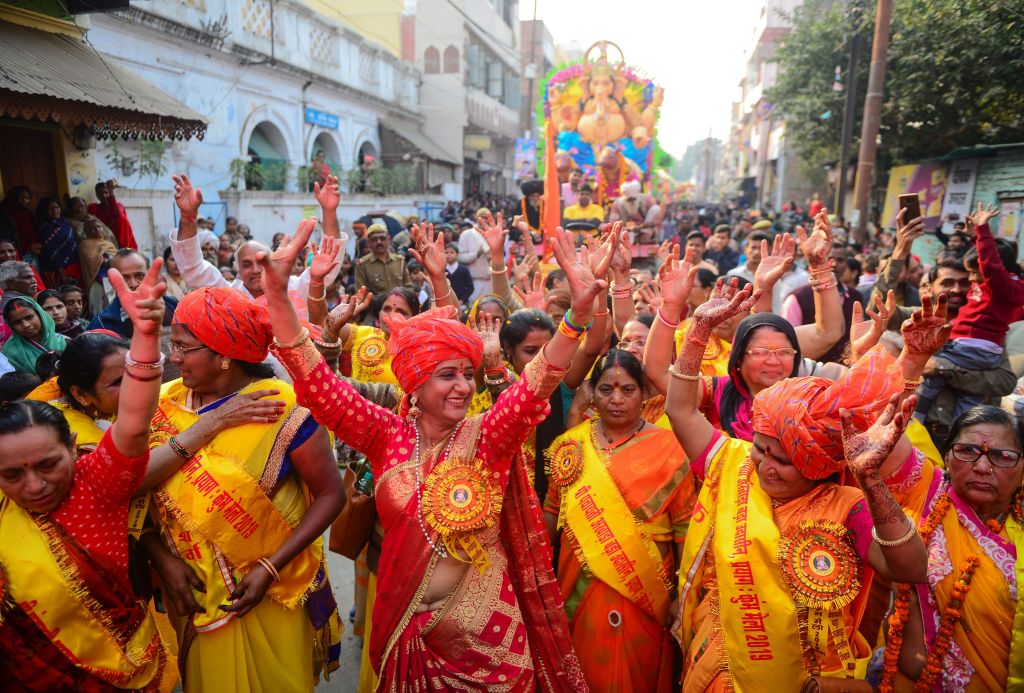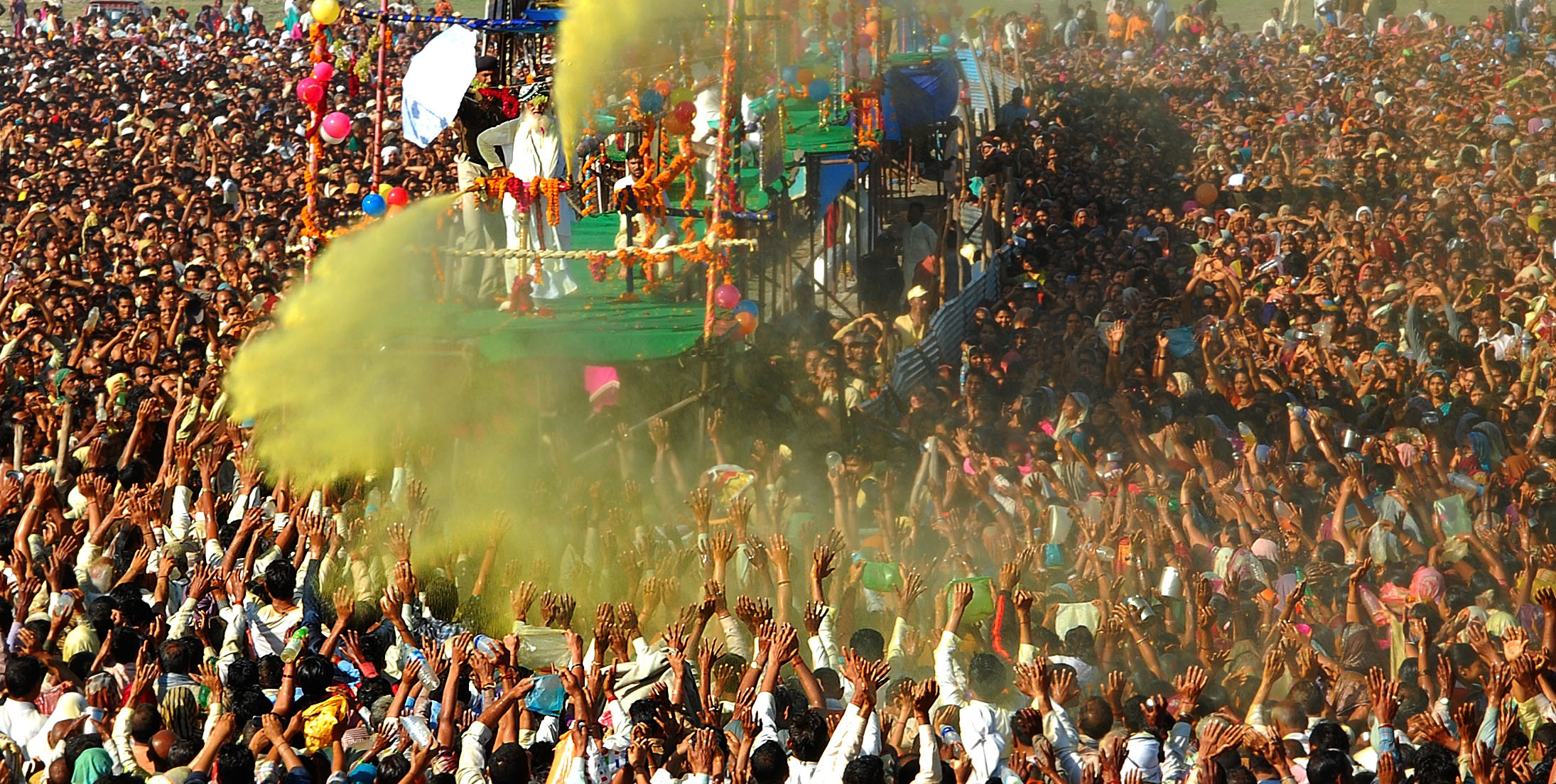Starting Tuesday, tens of millions of Hindu devotees in India will gather to wash their sins away on the banks of the Ganges River in a festival known as the Kumbh Mela. The tradition, which dates back over a millennia, is billed as the world’s largest single gathering of humanity.
Through March 4, an estimated 120 million people will flock to the northern city of Prayagraj to bathe at the Sangam, a confluence of the Ganges, the Yamuna and the Saraswati rivers, BBC reports. By comparison, that’s almost 14 times the population of New York City.
While the full Kumbh Mela occurs in 12-year cycles, there are three additional festivals held in between. This year’s Kumbh Mela is projected to be even bigger than the last full one in 2013, which drew an estimated 100 million people.
As it begins, here’s what you need to know about the mega-festival.

What’s the history behind it?
Kumbh means pot or pitcher, while mela means festival or fair. According to ancient Hindu mythology, Lord Vishnu released drops of an immortality nectar (carried in a kumbh) in four places where the holiday is now celebrated — Nashik, Prayagraj, Ujjain and Haridwar. The festival rotates approximately every three years through these cities, with the exact dates, places and length largely determined by astrology. In 2017, UNESCO added the festival to the List of Intangible Cultural Heritage, citing the event’s “central spiritual role in the country.”
Read more: Gathering of the Faithful: LIFE at India’s Colossal Kumbh Mela, 1953
How is Kumbh Mela celebrated?
The main ritual of Kumbh Mela is bathing in the rivers. Washing in holy waters is believed to deliver worshippers from their past sins and lead them to moksha, or liberation from the cycle of birth and death. A vast tent city dubbed a “pop-up megacity” has been built around the delta in Prayagraj to accommodate the millions that will come to submerge themselves in the sacred rivers.
Worshippers will line up before sunrise, and proceed into the water throughout the day. On Feb. 4, the most auspicious bathing day, 30 million are expected to attend, the BBC reports.
Ascetics known as sadhus also play essential roles in the tradition. There are a variety of sadhus, some of which are recognizable by their matted hair and naked bodies coated in ash. Although they generally lead lives of isolation, at Kumbh Mela these holy men come to together en masse in pursuit of enlightenment.

How has the city prepared for it?
Prayagraj has undergone a major infrastructure overhaul in the run up to this year’s Kumbh Mela. The budget for this year’s festival is nearly $400 million, BBC reports. The money funded 122,000 toilets, more than 4,200 “premium” tents, 10,000 police and all sorts of upgraded transportation, including a new airport and 186 miles of widened roadway. And in case any devotees fall ill, a newly installed 100-bed central hospital, along with 10 satellites, have been operational near the festival site since Dec. 1.
To manage the massive flow of pilgrims, police have said that worshippers may not bathe longer than 41 seconds so as to avoid deadly stampedes, such as the one in 2013 that killed more than 40 people.
Police also told the BBC that for the first time, artificial intelligence will be deployed to monitor the crowds.
“Our priority is to ensure there is no stampede or any disaster,” Senior police official Kavindra Pratap Singh said. “We are working round the clock to meet the challenge, to ensure nothing goes wrong.”
More Must-Reads From TIME
- The 100 Most Influential People of 2024
- The Revolution of Yulia Navalnaya
- 6 Compliments That Land Every Time
- What's the Deal With the Bitcoin Halving?
- If You're Dating Right Now , You're Brave: Column
- The AI That Could Heal a Divided Internet
- Fallout Is a Brilliant Model for the Future of Video Game Adaptations
- Want Weekly Recs on What to Watch, Read, and More? Sign Up for Worth Your Time
Contact us at letters@time.com